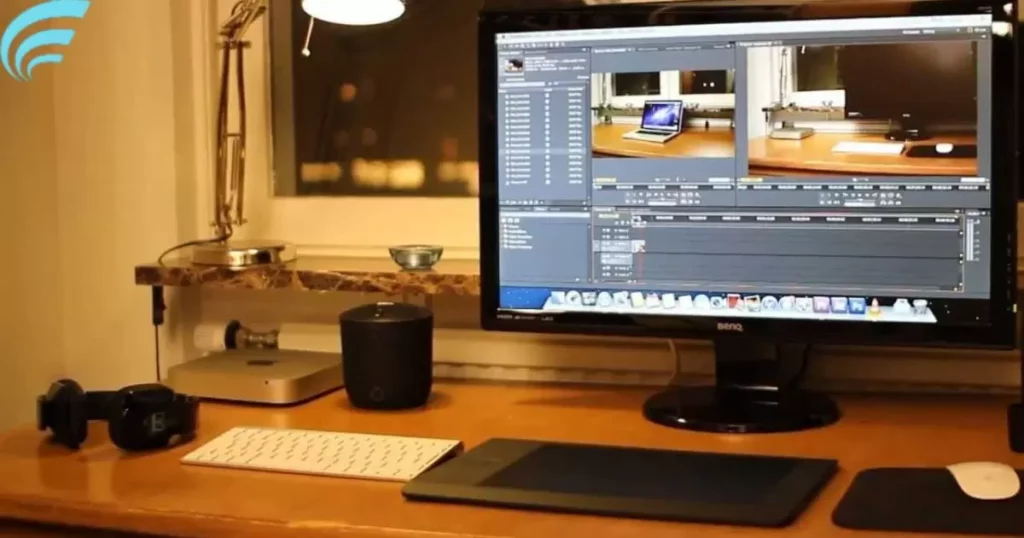In the world of computers and gaming, graphics cards play a crucial role in determining the quality of visuals and the overall performance of your system. When it comes to choosing a graphics card, one of the common questions that many people have is, Is a 2 GB graphics card good enough? In this article, we’ll explore what a 2 GB graphics card is, its capabilities, and whether it’s suitable for your specific needs.
What is graphics card memory?
Graphics card memory, often referred to as VRAM (Video Random Access Memory), is a type of memory specifically designed for handling visual data. It is different from the system RAM (Random Access Memory) used for general computing tasks. VRAM stores textures, frame buffers, and other graphical data that your computer’s GPU (Graphics Processing Unit) needs to render images and videos.
The Role of VRAM
The amount of VRAM in your graphics card plays a significant role in determining how well it can handle various tasks. Here’s a brief overview of the role of VRAM:
- Texture Storage: VRAM stores textures used in games and applications. The more VRAM you have, the higher the resolution and quality of textures that can be loaded in real-time.
- Frame Buffer: VRAM is also used to store frame buffers, which are essentially the images that make up what you see on your screen. The larger the frame buffer, the more pixels and detail can be displayed without compromising performance.
- Multiple Displays: If you use multiple monitors or displays, more VRAM can be advantageous as it allows your graphics card to handle the additional screen real estate efficiently.
- Video Playback: VRAM is crucial for smooth video playback, especially when dealing with high-definition content. Insufficient VRAM can lead to video stuttering and poor playback quality.
Now that we have a basic understanding of VRAM, let’s explore the specific case of a 2 GB graphics card.
Is 2 GB of VRAM good enough?
A 2 GB graphics card is considered relatively modest in terms of VRAM capacity when compared to the higher-end models available today. However, whether it’s “good enough” depends on your intended usage and the types of tasks you expect your graphics card to handle. Let’s break it down:
Casual Gaming

For casual gaming, a 2 GB graphics card can be sufficient for running older games and some less demanding titles. If you’re not overly concerned about playing the latest graphically-intensive games at high settings, a 2 GB card might serve you well. It’s essential to adjust in-game settings to lower resolutions and graphical details to achieve smooth performance.
General Computing
If you primarily use your computer for everyday tasks like web browsing, word processing, and watching videos, a 2 GB graphics card is more than enough. It can handle basic graphic rendering tasks without breaking a sweat.
Media Consumption
For watching videos, whether it’s streaming content or local files, a 2 GB graphics card can provide a good experience. It can handle high-definition (HD) content without any issues. However, if you’re into 4K video content or professional video editing, you might consider a graphics card with more VRAM for smoother performance.
Graphic Design and Content Creation
If you’re a graphic designer, video editor, or content creator, you’ll likely need more VRAM than what a 2 GB card can offer. Working with large image files, 3D rendering, or high-resolution video editing often requires a graphics card with 4 GB or more of VRAM for optimal performance.
Gaming Performance

When it comes to gaming, the VRAM requirements can vary significantly between games. Older titles and indie games typically require less VRAM, making them playable on a 2 GB graphics card. However, modern AAA games with high-quality textures and complex environments may demand 4 GB or more of VRAM for a smooth experience at higher resolutions.
Consider Your Monitor’s Resolution
Another critical factor to consider is the resolution of your monitor. The higher the resolution, the more VRAM your graphics card may need to deliver optimal performance. Here’s a rough guideline:
- 1080p (Full HD): A 2 GB graphics card can handle most games at this resolution, but you might need to lower some graphical settings in more demanding titles.
- 1440p (2K): For gaming at 1440p, a graphics card with 4 GB or more of VRAM is recommended for an excellent experience with modern titles.
- 4K (Ultra HD): Gaming at 4K requires a high-end graphics card with 8 GB or more of VRAM to achieve good frame rates and visual quality.
When More VRAM Matters
While a 2 GB graphics card can serve various purposes, there are specific scenarios where having more VRAM becomes crucial:
Future-Proofing
If you plan to keep your system relevant for several years and want it to handle upcoming games and software, investing in a graphics card with more VRAM is wise. Games and applications tend to become more demanding over time.
Multi-Monitor Setups
If you’re using multiple monitors for gaming or productivity, a graphics card with additional VRAM can help ensure a smooth experience and support higher resolutions across all displays.
Content Creation
Professionals engaged in content creation, such as video editing, 3D rendering, or graphic design, should opt for graphics cards with larger VRAM capacities to work efficiently and without interruptions.
Virtual Reality (VR)
VR experiences are demanding on a graphics card. To enjoy a seamless VR experience with high-quality visuals, a graphics card with at least 6 GB of VRAM is recommended.
Real-World Examples
Let’s take a look at a few real-world scenarios to help you understand if a 2 GB graphics card is suitable for your needs:
Scenario 1: Sarah’s Gaming PC
Sarah loves playing video games in her free time, but she doesn’t play the latest AAA titles. She mostly enjoys older and indie games. In this case, a 2 GB graphics card is a cost-effective choice for her gaming needs, and it allows her to enjoy her favorite titles without breaking the bank.
Scenario 2: John’s Video Editing Workstation

John is a professional video editor, and he frequently works with 4K video footage. In this scenario, a 2 GB graphics card won’t cut it. John needs a graphics card with at least 8 GB of VRAM to ensure smooth video editing and rendering without bottlenecks.
Scenario 3: Emma’s Home Office PC
Emma uses her computer primarily for business-related tasks, web browsing, and watching HD videos. A 2 GB graphics card is more than sufficient for her needs. It ensures a smooth display and allows her to multitask without any issues.
Graphics Card Tiers
Entry-level graphics cards are loyalists. They are good for simple tasks and come with around 2 GB of memory. If you’re into casual gaming or basic computer stuff, these cards are just fine.
High-end graphics cards are like superheroes. They can handle tough jobs, like gaming or professional work. These cards have 8 GB or even more memory for top-notch performance.
Enthusiast cards are the bosses of the graphics card world. They’re super powerful, with 16 GB or more of memory. If you’re into 4K gaming or serious professional tasks like content creation, these cards are what you need.
FAQs
Is a 2 GB graphics card good for gaming?
A 2 GB graphics card is okay for casual gaming, but it might struggle with modern, graphics-intensive games at higher settings.
Can a 2 GB graphics card handle video editing?
A 2 GB graphics card is not ideal for video editing, especially with high-resolution content. You’d want more VRAM for smoother editing.
Is a 2 GB graphics card suitable for multiple monitors?
Using multiple monitors may work, but for the best experience, a graphics card with more VRAM is recommended.
Will a 2 GB graphics card support 4K resolution?
Gaming at 4K is challenging for a 2 GB card. For good performance at 4K, consider a card with more VRAM.
Is a 2 GB graphics card future-proof?
A 2 GB graphics card is not the best choice for future-proofing your system. Games and software tend to become more demanding over time, so more VRAM is a safer bet.
Conclusion
In the end, whether a 2 GB graphics card is good for you depends on your specific needs and expectations. It can be suitable for casual gaming, general computing, and media consumption. For more demanding tasks such as gaming at higher resolutions, content creation, and future-proofing, you might want to consider a graphics card with more VRAM.
Before making a purchase, assess your intended usage, the monitor’s resolution, and the types of software or games you plan to run. If you’re wondering, what does the ‘ti’ stand for in graphics cards? It’s essential to strike a balance between your budget and the performance you require from your graphics card. Ultimately, the right graphics card for you is the one that meets your needs and provides an enjoyable computing experience.











